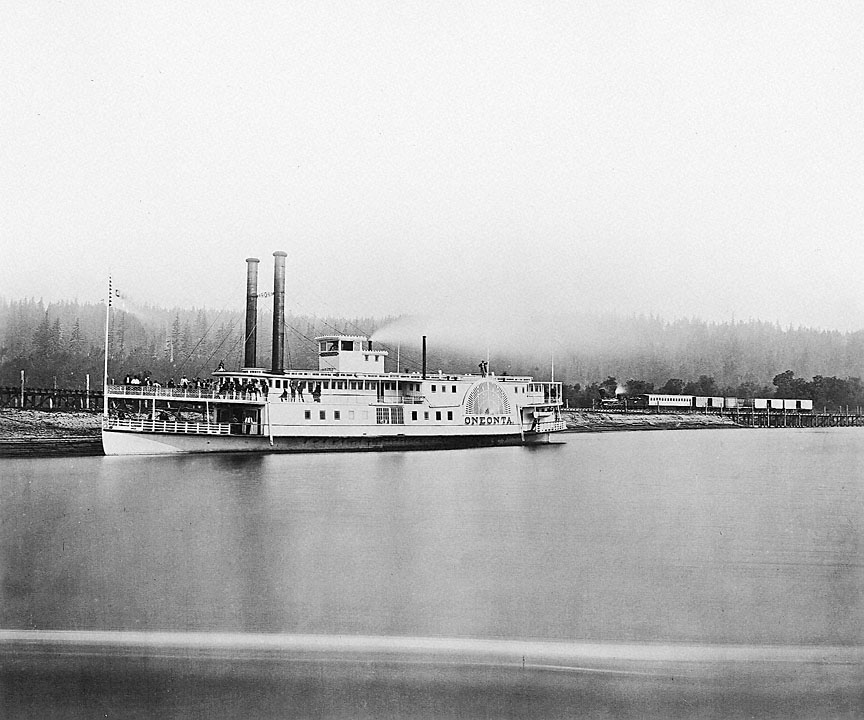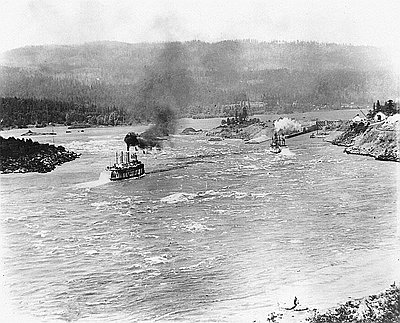- Catalog No. —
- OrHi 1458
- Date —
- 1867
- Era —
- 1846-1880 (Treaties, Civil War, and Immigration)
- Themes —
- Transportation and Communication
- Credits —
- Oregon Historical Society
- Regions —
- Columbia River
- Author —
- C. E. Watkins, photographer
Steamboat Oneonta, Columbia River
The Oneonta, a side-wheeler steamboat built in 1863 by Samuel Forman, gave the Oregon Steam Navigation Company a transportation link on the “middle” part of the Columbia River. The steamer, which was modeled on Mississippi River boats, traveled between the Cascade Rapids and the lower part of Celilo Falls. Steamers could not safely pass the falls or the rapids, which consisted of a 4.5-mile stretch of boulders, eddies, and twelve — twenty-four-foot waterfalls. Passengers and goods were moved around these navigational obstacles on portages, initially rough trails that were eventually developed into railroad tramways. River traffic between Portland and upriver locations in Idaho and eastern Oregon dramatically increased in the 1860s, when gold was discovered in those regions. Business decreased after the rush ended. In 1870, OSNC president John C. Ainsworth piloted the Oneonta on a risky run down the Cascades at high water to serve the more popular route between there and Portland. The company retired the Oneonta in 1877, and the boat served as a barge for several years before being abandoned in 1880. In this photograph, taken by Carlton E. Watkins in 1867, the portage railroad can be seen behind the Oneonta.
Further Reading:
Mills, Randall V. Stern-wheelers up Columbia. Palo Alto, Calif., 1947.
Schwantes, Carlos A. “Reflections on the Evolution of a Water Highway.” Columbia 15, 2001.
Written by Kathy Tucker, © Oregon Historical Society 2002.

